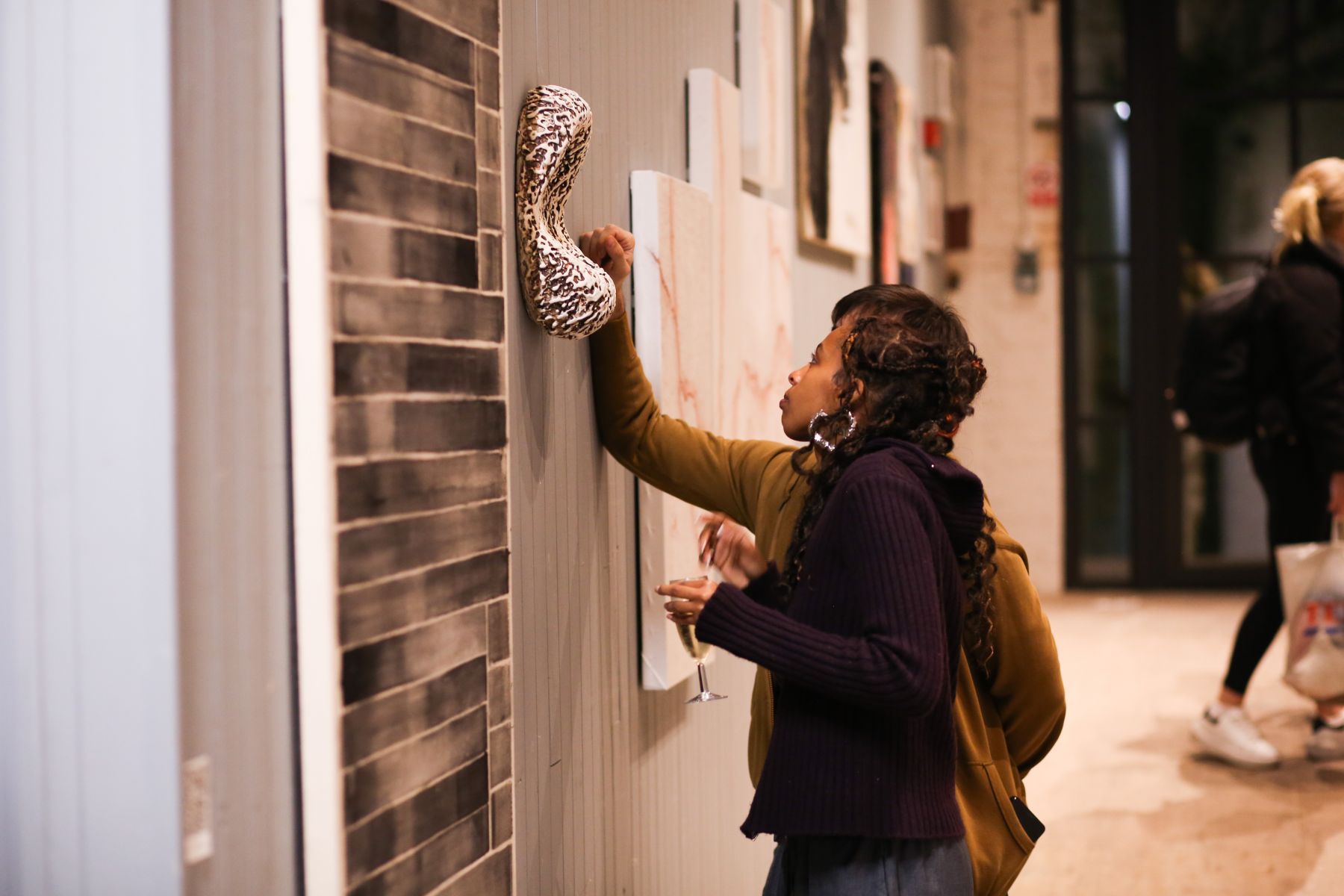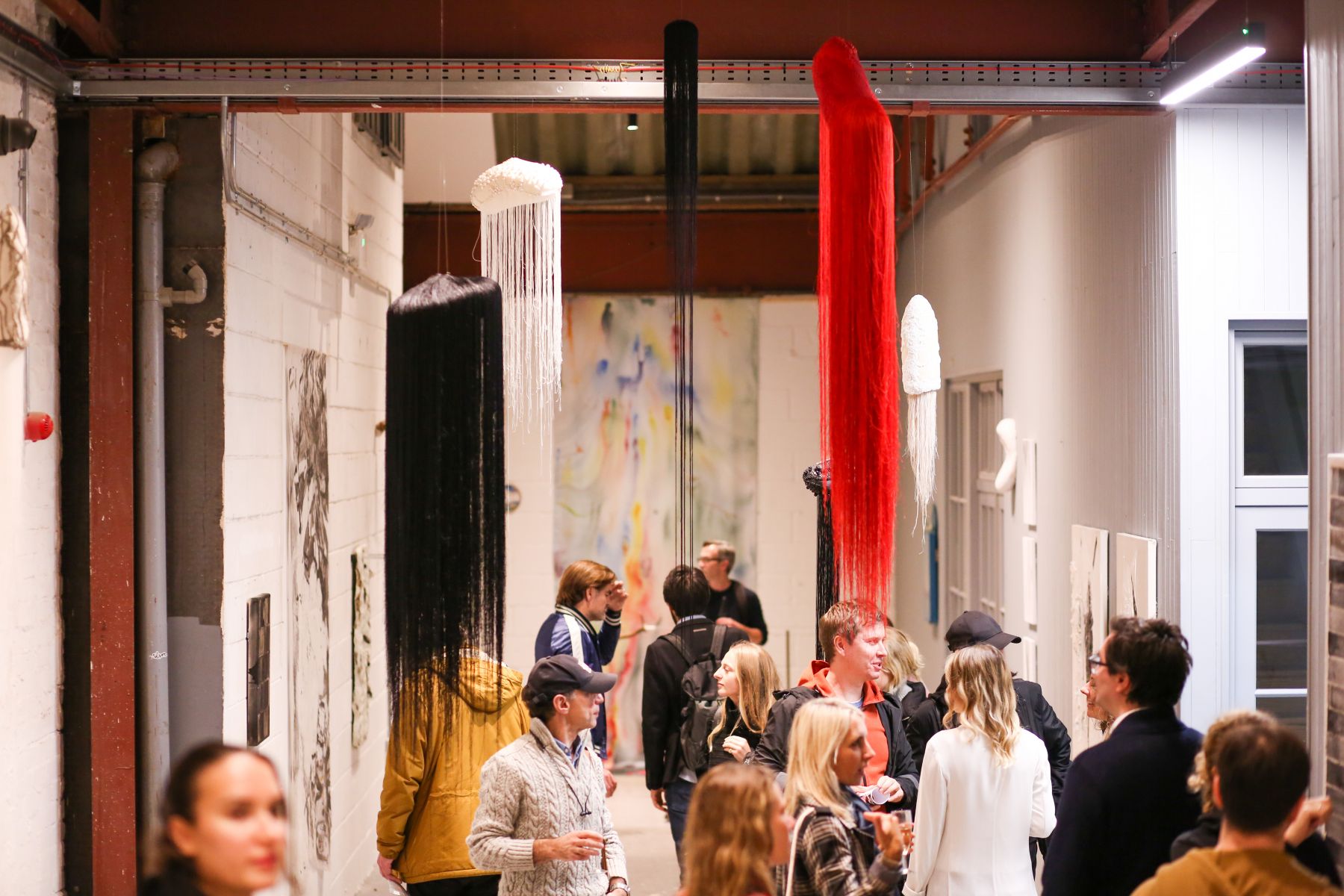
 +
+
October 07- November 11, 2022 Excelsior studios, London
Co-curated by Tatiana Antonova, Marina Shirskaya, Anzhela Popova
ADH Gallery presents its inaugural London exhibition “On Top of the Crystal Mountain”.
The show reveals the artists’ approach to exploring the notions of change, destiny and fate. The all-encompassing incomprehensibility of events and adaptation to constantly changing conditions lead to a total collapse of the human will or an urge to take control of the situation.
Focusing on life-changing milestones to timelessness concepts, the artists use a variety of media, styles and formats. The works presented show the study of personal response to surrounding environment connecting a viewer to individual and global events.
Monday – Friday, 12 – 8pm
weekends by appointment +447921835699
Location:
17-19 Sunbeam Road, London, NW10 6JP
Concept
Each person has his own path. Some people move swiftly, without looking back; at the same time, most people are afraid of slipping and cautiously take each new step. The road of promise is unpredictable and dangerous, and at the top of the mountain, one way or another, the unknown awaits us. Man’s destiny is made up of the totality of his actions in response to the circumstances that have been given him by time, history, or nature.
With evolution of society, the new era calls for the autonomy of the individual, and thus for man to take control of his own destiny. But is this possible on the narrow, hilly path of modernity?
The all-encompassing incomprehensibility of events, the adaptation to constantly changing conditions can lead to a total breakdown of the human will. Following toward some personal or collective utopian horizon man is governed by faith, which is not always confessional, and hope, which is far from always unfulfilled. Each new twist of fate, like the experience of encountering something unexplored, changes the trajectory of life.
The exhibition “On Top of a Crystal Mountain” is built on the principle of the game, where there are no pointers and rules, and the visitor himself chooses the trajectory of his movement. The exhibition is divided into conditional subsections and is built on the basis of artists’ reflections as functionaries of fate.
The first chapter is devoted to the fatal coincidence of circumstances, which leads to traumatic events. In a small chamber space, the artist Natalia Grezina acts as a distributor. Fixing in her objects the memories of the military legacy of the past and the chaos of the present, the artist argues about the symbolic duality of things. Just like the old Moyras, Natalia weaves the pattern of blind chance and embroiders the possible options of life or death. The fate of man is firmly enshrined in her soft sculpture, where there is room for fragility, cruelty and lack of logic of actions.
Fabulous anthropomorphic images on Vasilisa Lebedeva’s canvas serve as a reminder of “playing destiny “. They flicker and float simultaneously in several directions. Each hero chooses his own path – to return, to stay here, or to go further along the winding path.
The third chapter reveals the rational side of destiny. The orderliness of the strokes and lines in Nikolai Morgunov’s canvases shows that a person can act as the director of his own life scenario. Everyone gets his role and it is already predetermined. Transparent grids on the surface of the canvases, as trajectories of intersecting life lines, are able to reveal new aspects of what is hidden deep inside. Terence Sanford’s monochrome works are the artist’s attempt to capture the existential conflicts that arise in the search for self-identity. The abstraction only heightens the tension while allowing one to retain his sanity.
The image of fate-lender is most benevolent, and circumstances are perceived as a gift and an opportunity to independently dispose of history, nature and time. Fedora Akimova stitches cultural codes into her objects. The shape of the oval refers to the cyclical nature of history, and the repetition of events erases the meaning of place, time and plot. Ilya Romanov addresses the concept of time, re-evaluating the past of unconventional materials that lead to an understanding of our connection to the world. Joseph Grahame’s abstract canvases are the result of a reflection on how a new phenomenon or meaning can be born out of random and arbitrary actions. The fine lines in Ustina Yakovleva’s canvases demonstrate the connection between human destiny and nature. Mollusk-objects as some of the most ancient forms of life help to comprehend the concept of eternity. At the same time, Margo Trushina’s works try to explore the relationship between our physical and planetary selves, questioning our bodily integrity. This sense of oneness is a source of spiritual energy that gives a sense of limitlessness and connection with the universe.
In the final chapter, fate judges man by his actions and it is not always according to human law. The ceramic installation “Choros” by Alena Mukhina refers to the laws of heaven and to the tradition of vanitas, a symbolic reminder of death. The tiered panikadila is intended to guide us on the path of righteous life and warn us against destructive vanity. Kirill Basalaev reflects on the ability of man to choose freely. The process of creation and destruction is depicted in the artist’s paintings. Layers, chips and cracks in the series “Memorization” remind us of the eternal fading. It is the ability to realize finitude that becomes compatible with free will and fateful personal choice.
Artists
Iliya Romanov
Margo Trushina
Terence Senford
Vasilisa Lebedeva
with gratitude to all at Excelsior studios for their help and support
Photo by Daniel Barnett





